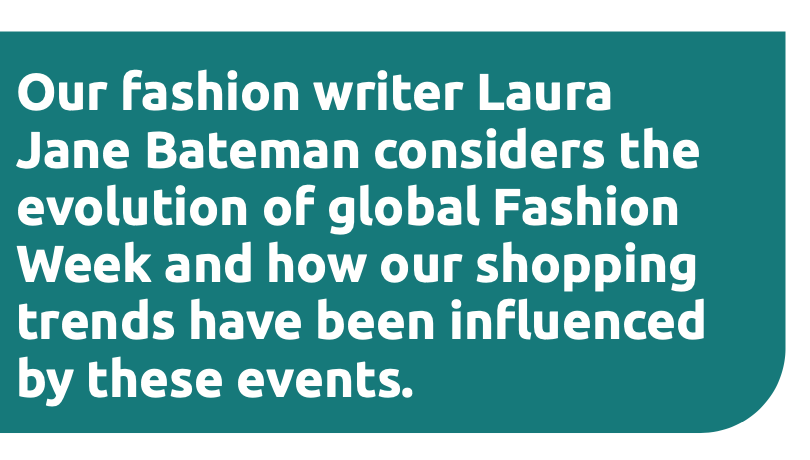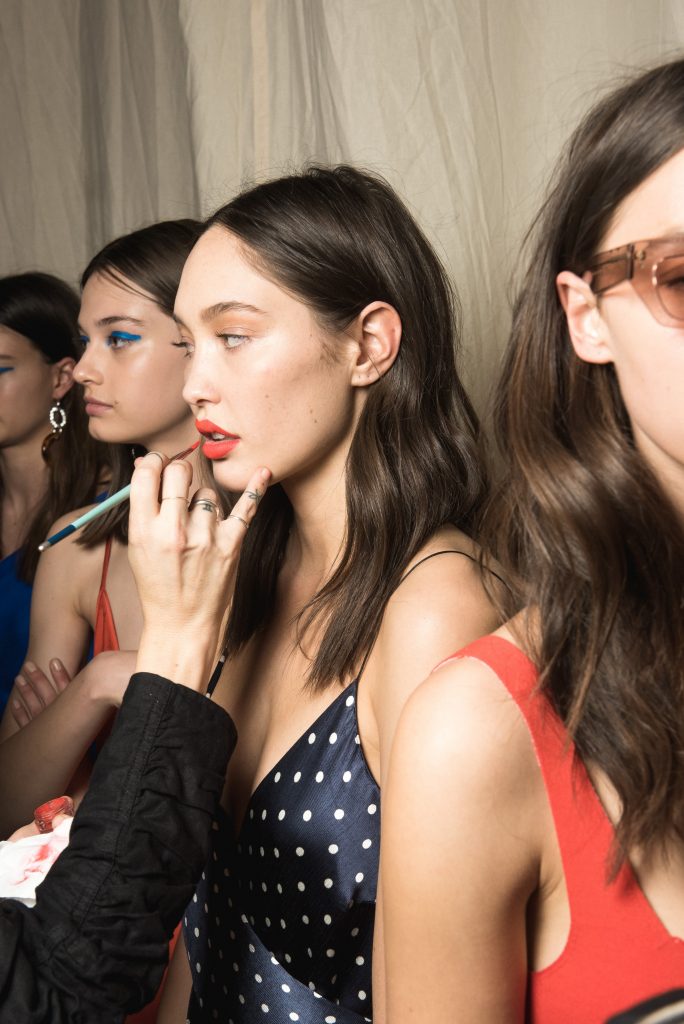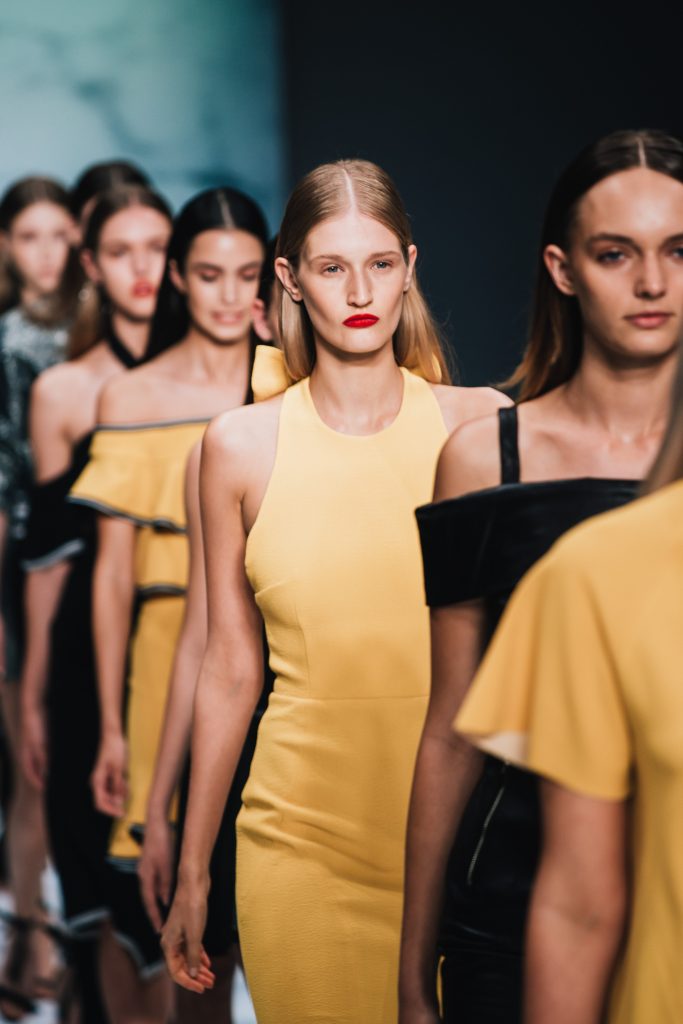
Twice a year, established designers present their new and original designs at Fashion Weeks across the world. Countless hours of work go into putting a runway show together; behind-the-scenes, a whole host of talented designers, technicians and stylists are all called to participate. You can expect to recognise a face or two both on the front row and the catwalk with established fashion brands guaranteed to make an appearance, but Fashion Week also presents the opportunity for new models to be discovered.
There is some debate when it comes to the history of Fashion Week, with conflicting opinions on which city first introduced it. New York held their very first Fashion Week with the intention of offering an alternative to French fashion during the height of World War II in 1943. The first recognisable Paris Fashion Week was held at Versailles Palace in 1973; today, it’s managed by the French Fashion Federation, with some shows choosing to run independently. In addition, there are annual haute couture shows exclusively in Paris. London was the first city to adopt the term “Fashion Week” in 1984 after the creation of the British Fashion Council one year previous and the introduction of the notable Designer of the Year award. Italy’s Fashion Week is distinguished as the only one not to be held in its capital city but in fact Milan and can be dated back to 1958. New York, Paris, London and Milan: also known as Fashion Week’s Big Four.

The shows emerged into a cluster of two key seasons, spring-summer and autumn-winter, with S/S typically showing in September and A/W in February. Fashion Week gives established designers the opportunity to present their “Ready-to-Wear” collection. On prior occasions, designers have offered attendees the chance to purchase catwalk looks immediately after the show and directly from the front row, although the term “Ready-to-Wear” is otherwise not translated quite so literally. There are consistent brand names amongst Fashion Week shows, with Alexander Wang showing in New York, Yves Saint Laurent in Paris, Prada in Milan, and Victoria Beckham previewing her own brand in London. Some of the more controversial yet unforgettable shows include Kate Moss in holographic form walking for Alexander McQueen’s 2006 autumn- winter show in Paris and Karl Lagerfeld for Fendi at the Great Wall of China back in 2007 (supposedly without official permission). It seems Lagerfeld has a thing for “putting on a show” as his 2010 Fall show for Chanel showcased fashion such as faux fur coats and shaggy snow boots with a back drop of melting ice floes.
These bi-annual events historically focus on womenswear but Men’s Fashion Week is growing in both importance and popularity. In 2012, London Fashion Week launched London Collections: Men, a weekend dedicated to menswear fashion shows. Today, Men’s Fashion Week is recognised as a global event. Just like womenswear, these events are a chance to celebrate the commercial and creative importance of the fashion industry. This year’s S/S ’22 menswear shows are due to go ahead in June.
Around the time of Fashion Week, the high street acts as a complimentary runway. There’s something about the alert of Fashion Week that inspires many people to dig deep in their wardrobe and dare to dress up for the occasion. Social media is a great place to follow street style coverage, specifically Instagram where you can search tags and locations. Other sources include websites such as Drapers and British Fashion Council which continue to provide regular Fashion Week updates, and magazines such as Vogue, Elle, Harper’s Bazaar and The Sunday Times Style that are readily available online thanks to technology. These publications do all the hard work for us to present the key trends both on and off the catwalk during Fashion Week; but as the outside world reopens in time for this season, I encourage you to walk down to your local high street to find your own inspiration.

Although given the green light for in-person events, cities such as London plan to put digital first for the upcoming S/S ’22 Fashion Week in September and we can expect a hybrid of physical and virtual shows, according to Drapers. The creativity behind how Fashion Week adapted to unexpected change in 2020 as a result of the pandemic was so tech-savvy that some designers are rumoured to be debuting their new collections in digital form again this season. Virtual catwalk shows allow designers to reach a wider audience, despite the fact that Fashion Week has long been considered a celebrity event. Some VIP guests even expressed their disappointment at missing the privilege of travelling overseas to attend designer shows as this aspect plays a key part in the glamour and appeal of Fashion Week.
The last year has been extremely challenging for the fashion industry as a whole but Leicester- based NEXT have reported a rise in full-priced sales and profits thanks to their strong online presence and active purchasing of third-party brands. They have accumulated licensing for names such as Victoria’s Secret, Laura Ashley and Ted Baker. They were also in the running to buy Topshop and rumour suggests they are strong contenders to acquire Asda’s fashion brand, George, whose headquarters are just around the corner in Leicestershire. NEXT’s new flagship store opened as part of the large Fosse Park extension in April and is one of their biggest yet.
Let me know your thoughts on this topic by tweeting me @whatlaurasaid.






